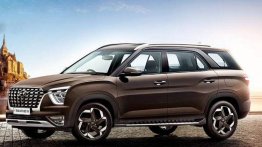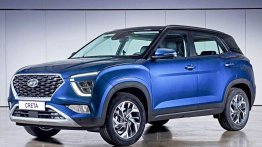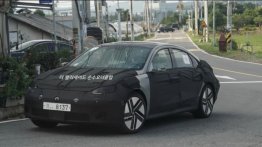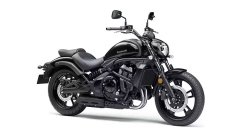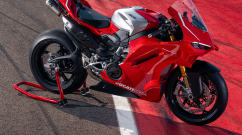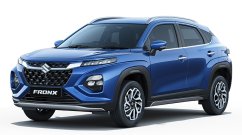When a green color Hyundai i20 was displayed at the Geneva Motor Show, crowds stayed where they were. Pity that they failed to notice the rear doors missing on this Hyundai. In theory, a 3-door Hyundai is more stimulating than the 5-door sibling, isn't it?
Hyundai i20 3-door facts-
- Hyundai interestingly states the i20 3-door is "targeted at young professionals without children."
- Comes in three variants named Classic, Comfort and Style
- 1.2 liter Kappa gasoline engine with 78 hp, fuel consumption of 5.2 liters per 100 km and CO2 emission figure stands at 124 g/km
Source- World Car Fans
Press Release
| Building on the success of the recently launched Hyundai i20 five-door, the Geneva Motor Show is host to the world premiere of the new three-door i20 derivative. The chic and versatile i20, which replaced the Getz, made its debut at the 2008 Paris Mondial de l'Automobile and is playing an important role in expanding the popularity of the Hyundai brand in Europe.
With the introduction of a new three-door model, Hyundai will broaden the i20's appeal to the fastest-growing automotive customer base in Europe. Targeted at young professionals without children, seeking excellent quality, high specifications and affordable motoring, the three-door model offers a new, lower price entry point for the i20 line-up. When it goes on sale in the second quarter of 2009, the i20 three-door will become the best-value variant in the i20 range. Furthermore, i20 three-door boasts seven Euro IV-compliant petrol and diesel engines offering remarkable fuel efficiency and low CO2 emissions. Notably, the 1.2-litre, 78 PS ‘Kappa' petrol engine uses just 5.2l/100km on the combined cycle and has a CO2 rating of 124g/km. Adding to Hyundai's class-leading value package is the 75 PS 1.4-litre diesel engine, with a CO2 rating of 116g/km and consumption of 4.4l/100km on the combined cycle. Customers will also benefit from Hyundai's unlimited mileage three-year warranty. Positioned between the successful i10 and i30 models, the i20 continues the distinctive visual characteristics of the Hyundai i-range, comprising the bold chrome-finished grille, flanked by piercing teardrop headlamps and complimented by prominent rear light clusters. Sharing many of its styling features with the five-door i20, the front and rear of the three-door model remain unchanged. The distinctive crease lines that run along the side are enhanced by the longer front doors and sporty, upswept shape of the rear-side window. To suit all tastes, the i20 is available in 10 solid and metallic exterior colours. Built on the same 2,525mm wheelbase and weighing 10-kilograms less than the i20 five-door, the three-door offers an equally well proportioned exterior and spacious interior that will effortlessly accommodate adult passengers in the front and rear seats. The larger front doors create a wide entry aperture, and Hyundai's quick-release memory seats with walk-in functionality provide easy access to and from the rear seats. The system enables the front-seat backrests to be tipped and the whole seat to slide forwards. This simple-to-use system returns the front seat to the originally selected position without the need for readjustment. All three trim levels - Classic, Comfort and Style - offered on the five-door will be available on the i20 three-door as well. They combine generous standard equipment and safety features that surpass the competition. Matching the five-door variant, the three-door model features high-end kit such as climate control, multi-function steering wheel, keyless entry and electrically-operated windows and side mirrors. The modern radio/CD system is MP3-compatible and has four powerful speakers; the rear two speakers are repositioned in the three-door model to the interior rear quarter panels. Safety is always at the forefront for Hyundai and the i20 has an extensive list of active and passive equipment. This includes six airbags - front, side and curtain - as standard, active head-restraints, front seatbelt pretensioners, the latest-generation anti-lock brakes, Electronic Stability Control, and Electronic Brake force- Distribution. Kappa engine shines in i20 Hyundai expects i20 buyers will make the 1.2-litre petrol engine - dubbed ‘Kappa' - the best-selling power plant in the range. The new, all-alloy unit is the result of a 48-month development project, and combines miserly fuel consumption with low CO2 emissions to produce a compelling package with reduced running costs, compared to rival products. Kappa is the latest example of the company's expertise in developing lightweight, low-NVH, super-efficient engines, and follows the ‘Tau' 4.6-litre V8, which was named one of the 10 best engines of 2009 by automotive publisher Ward's. With a displacement of just 1,248cc, the 16-valve, DOHC Kappa unit develops an impressive 78 PS at 6,000rpm and a class-leading torque figure of 119Nm at 4,000rpm, endowing i20 with responsive acceleration and excellent driveability. The engine's specific torque figure also puts it well ahead of the competition. Vehicle performance and efficiency are aided by the fact that Kappa's dry weight is just 82.4kg - lighter than any other petrol engine of similar capacity. In addition, a number of steps have been taken to reduce friction and improve refinement, including the application of an innovative offset crankshaft. Just as impressive is the minimal level of noise at idle which, combined with the high-quality NVH rating achieved by Kappa in i20, further demonstrates Hyundai's engineering know-how. |


